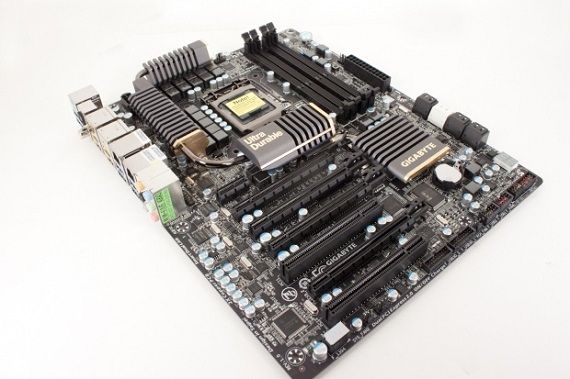Computer processors are entering a new phase of life. Both Intel and AMD now have processors available that incorporate an integrated graphics processor directly into the architecture. This provides many advantages in terms of cost and power efficiency, but performance is also improved.
One of the ways this is manifesting is the Quick Sync video feature added to Intel's new line of Core processors. According to Intel, this technology makes it possible for the company's new processors to transcode video more quickly than a $500 video card. Video transcoding is a common task, although you may not realize you're doing it. Exporting videos from a video editor, converting video formats and sending video to a mobile device are all examples of common tasks that benefit from accelerated transcoding. But how does Quick Sync work?
The Theory & Reality Behind Quick Sync
Processors are quick, but they were originally built as a very linear device. Information is shipped in, executed, and then shipped out. Changes and improvements have made this simple explanation less accurate over the years, but it largely remains true.
GPUs, on the other hand, are massively parallelized. They're built to deal with numerous bits of information, which is advantageous when computer hardware needs to output high-definition video or complex 3D graphics. By placing an integrated GPU directly on a new CPU architecture, it's possible to have the best of both worlds - at least in theory.
But does it really work? Yes, it does - and it actually seems to work as well as Intel suggests, which is rather stunning. According to benchmarks from Anandtech, a new Intel Core processor with Quick Sync enabled can encode video more quickly than a Geforce GTX 460. That's very impressive, as the Geforce GTX 460 is undoubtedly a more powerful piece of hardware than the integrated graphics processor on Intel's new processors. This means that Quick Sync will be the quickest way to transcode video for most users.
The Hardware Quagmire
If you like to create videos for YouTube, or you just have to ship videos off to your mobile device frequently, Intel Quick Sync should excite you. It could save you a lot of time. To enable Intel Quick Sync, however, you''ll need to make sure that you purchase the right hardware - and unfortunately, Intel has thrown several hurdles in your path.
The first hurdle is the chipset. Intel's new Core processors use the LGA1155 socket, which isn't compatible with older LGA1156 sockets. This means new chipsets for motherboards, which have arrived in the form of the H67 and P67. This is where things get funky. You see, the H67 is the only chipset that supports Quick Sync. If you buy a P67 motherboad, sorry - you can't use it. However, the H67 chipsets don't have overclocking features unlocked, while the P67 does. This is a choice no enthusiast wants to be forced to make.
As if that wasn't bad enough, Quick Sync will also be disabled if you're using discrete graphics. It should be noted, however, that Quick Sync should work on laptops with switchable graphics as long as the discrete graphics are turned off.
The Fight To Find Compatible Software
If you decide to buy an H67 motherboard and you don't have a discrete graphics processor, there is still one more thing to consider - the software. Just as with transcoding acceleration on GPUs, Intel's Quick Sync needs software optimization in order to work. Otherwise the software doesn't quite understand what the hardware is, or how to use it.
Currently Intel lists seven programs as being optimized for Quick Sync:
- Arcsoft MediaConverter
- Arcsoft MediaImpression
- Corel Digital Studio
- CyberLink MediaEspressor
- CyberLink PowerDirector
- MainConcept
- Roxio Creator
These are all very common software tools, but they're far from every imaginable video transcoding software. It remains to be seen how quickly Intel's technology catches on. I think it's safe to say, due to Intel's clout and cash, that Intel will have few problems making Quick Sync a commonly supported feature, but any prediction of the future is dubious when we're talking about computer hardware.
Conclusion
Intel Quick Sync is exciting, but still in its infancy. Its speed is offset by the limited hardware and software support that makes figuring out how to use it confusing. The fact that it can't be used with the P67 chipset or a discrete card also limits its appeal. Still, if you're thinking of buying or building a computer and you're not a PC gamer, Quick Sync is something to consider.
I hope that this guide has helped explain the technology, but if you have any questions, feel free to leave a comment.




